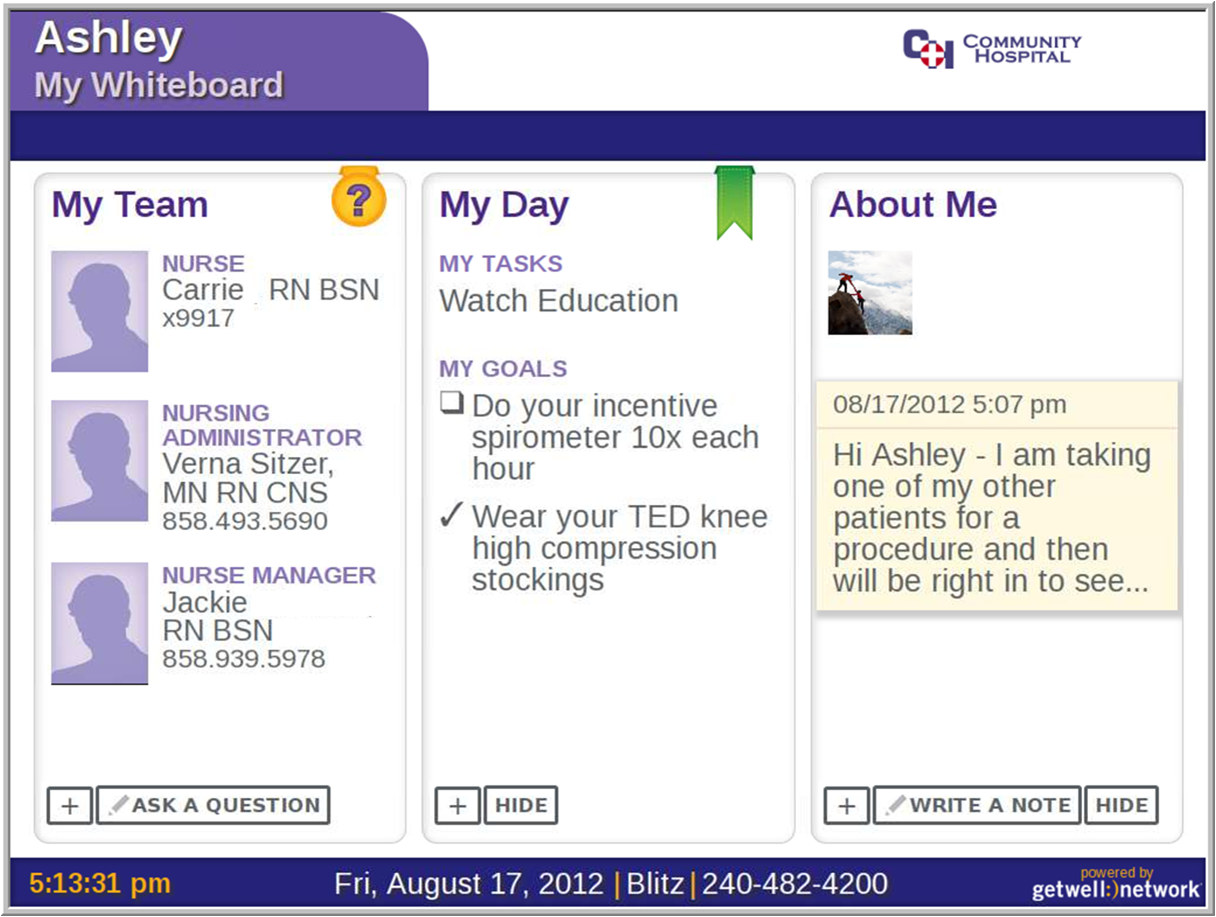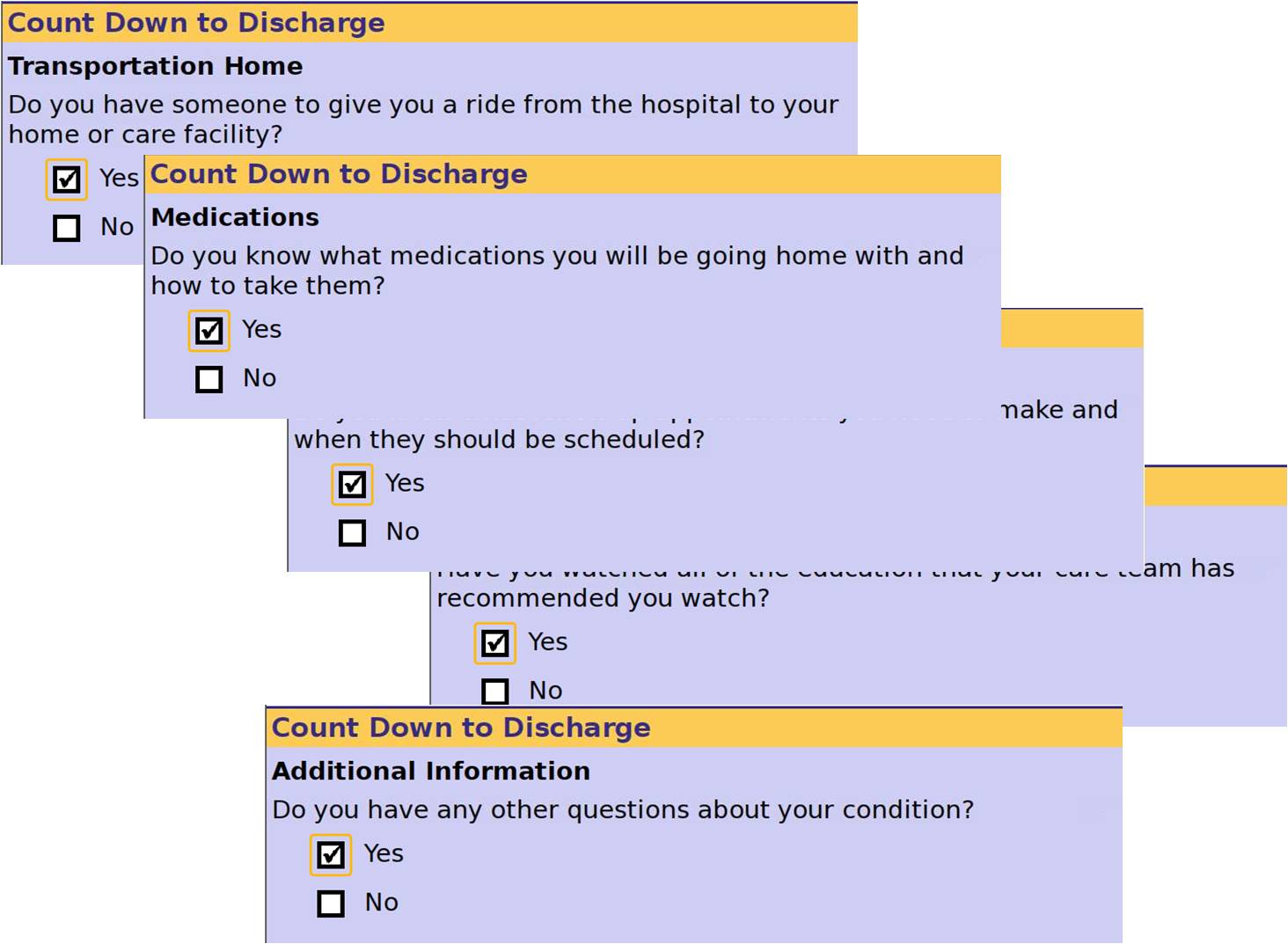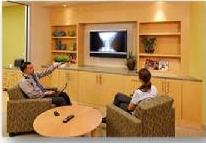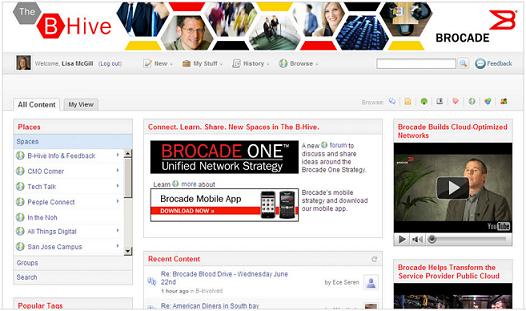
Sharp HealthCare, a Malcolm Baldrige National Quality Award winner, continues to provide a superior patient experience by investing in technologies to bring better care to patients and their families.
Last October, Sharp Memorial Hospital, a Sharp HealthCare hospital, began piloting GetWellNetwork's Interactive Patient WhiteBoard™ in their cardiology unit to communicate and collaborate with patients and their families about their care throughout their stay.
"Our goals for the pilot were to engage patients in their care, deliver information they need, help them understand their treatment plan, provide a way for them to interact with their care team and prepare for their discharge," explains Verna Sitzer, MN, RN, CNS, Manager, Nursing Innovation and Performance Excellence at Sharp Memorial Hospital.
Patients use the Whiteboard to learn about their care team, their day (i.e. goals, schedule, discharge activities) and participate in the personalized communication area to journal and share information. Patients use their Whiteboard to see tasks that need to be completed such as viewing educational videos that have been ordered and filling in a discharge planning questionnaire. A summary of the patient’s education activity and discharge information is accessible to the care team for review and follow up.
Sharp uses GetWellNetwork’s Interactive Patient Whiteboard to help care providers engage, educate and empower patients along the care continuum. This patient-centered platform, delivered across mobile devices, computers and televisions, enables Sharp to implement a new care delivery model called Interactive Patient Care (IPC). Based on the premise that a more engaged patient is a satisfied patient with better outcomes, GetWellNetwork’s IPC combines the tools, process and people to activate patients in their care, transform clinical practice and advance key performance measures.
Pilot Insights
During the Whiteboard pilot, the Sharp team learned about the importance of enabling better communication between the care providers and patients. "Our patients wanted to have critical information and to be able to write down questions for the care team for a more meaningful interaction. Knowing what to expect and when to expect it is important for patients so we made this a priority in the design of the display,” adds Sitzer
One of Sharp Healthcare's big accomplishments was to connect the Interactive Patient Care solution to their EMR to capture the patient's engagement and document progress towards their discharge education plan. “Having this connection was an essential condition for launching the technology throughout the healthcare system. Providers are able to integrate patient education into their daily workflow using the EMR for ordering education videos and obtaining results of the education”, explains Sitzer
Sharp Healthcare is in the process of rolling out the Interactive Patient Care solution to their other hospitals. Sharp Grossmont hospital implemented it early this year (February) and Sharp Mary Birch Hospital for Women and Newborns will begin this summer (July).
Sharp & Patient Engagement Framework

Last Fall, National eHealth Collaborative (NeHC) launched their Patient Engagement Framework. The Patient Engagement Framework is designed to guide providers along the path for meaningful use. Sharp Memorial Hospital has adopted this framework to further enhance the Interactive Patient Care Solution. Sitzer shares examples below and describes ways they are enabling patients to participate in the care process.
Stage 1: Inform Me
'We use the Interactive Patient Care solution to send the patient messages about what we need them to do during their stay so they can play an active role in their recovery. We have them watch a video on hospital safety when they are admitted and recommend other relevant educational information. We ask them if they would like to take a self-assessment of their risk for falling and provide them with a video about fall prevention”, describes Sitzer.
Stage 2: Engage Me
Sharp Healthcare puts their patients in the driver’s seat and gives them the option of when they would like to be engaged. Sharp has devised pathways to deliver and gather information from the patient. The 'discharge pathway' presents a set of questions when the patient is preparing for home to determine if there are obstacles that need to be addressed and confirm that all educational information has been viewed and understood. "Our motto is 'when the learner is ready, the teacher will appear’," shares Sitzer. "We want to give our patients control over their recovery."
Stage 3: Empower Me
By giving patients the information that they need, Sharp empowers them to participate in the care planning process, enabling them to ask questions of and provide answers to the care team. For example, patients are able to respond to assessment questions, message providers or services about their needs, or respond to focused surveys on their care or service experience. Their responses notify a provider to deliver patient and family- centered care.
Stage 4: Partner with Me
Care pathways can be tailored to meet various health conditions such as heart failure management. These modules rely on the patient partnering with providers to meet specific goals. For example within the heart failure module, patients must complete certain videos and comprehension questions to move to the next module or phase so that they get the necessary education and preparation for discharge.
Stage 5: Support my e-Community
The Sharp Healthcare team is planning to use the Interactive Patient Care system to support patients after they leave the hospital. "We are working on ways we can use this system to provide the patient with personalized education information when home through online and mobile channels," explains Sitzer.
In the future, Sharp Healthcare would like to tie in health-related devices to gather and monitor information about the patient to provide support or to intervene when needed.
 care collaboration,
care collaboration,  educating consumers about health and wellness,
educating consumers about health and wellness,  family ehealth engagement,
family ehealth engagement,  mobile health application,
mobile health application,  online health and wellness support,
online health and wellness support,  patient ehealth engagement in
patient ehealth engagement in  Behavior Change Health & Wellness,
Behavior Change Health & Wellness,  Connected Health,
Connected Health,  Data Driven Health Engagement,
Data Driven Health Engagement,  Decision Support eHealth,
Decision Support eHealth,  Mobile Engagement Health & Wellness,
Mobile Engagement Health & Wellness,  Patient Decision Support,
Patient Decision Support,  Patient Engagement,
Patient Engagement,  Patient Portal,
Patient Portal,  Personalization eHealth,
Personalization eHealth,  Population health management,
Population health management,  shared decision making ehealth
shared decision making ehealth 







